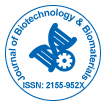Nuestro grupo organiza más de 3000 Series de conferencias Eventos cada año en EE. UU., Europa y América. Asia con el apoyo de 1.000 sociedades científicas más y publica más de 700 Acceso abierto Revistas que contienen más de 50.000 personalidades eminentes, científicos de renombre como miembros del consejo editorial.
Revistas de acceso abierto que ganan más lectores y citas
700 revistas y 15 000 000 de lectores Cada revista obtiene más de 25 000 lectores
Indexado en
- Índice Copérnico
- Google Académico
- sherpa romeo
- Abrir puerta J
- Revista GenámicaBuscar
- Claves Académicas
- InvestigaciónBiblia
- Infraestructura Nacional del Conocimiento de China (CNKI)
- Acceso a la Investigación Global en Línea en Agricultura (AGORA)
- Biblioteca de revistas electrónicas
- Búsqueda de referencia
- Universidad Hamdard
- EBSCO AZ
- OCLC-WorldCat
- Catálogo en línea SWB
- Biblioteca Virtual de Biología (vifabio)
- publones
- Fundación de Ginebra para la educación y la investigación médicas
- Pub Europeo
- ICMJE
Enlaces útiles
Revistas de acceso abierto
Comparte esta página
Abstracto
Physiological and Molecular Studies of Transgenic Tomato (Solanumly copersicumL.) Fruits Over-expressing the Gene Solyc11g011300 Encoding a Rhamno-galacturonanLyase Enzyme
Trillo-Hernández, Eduardo-Antonio1; Orozco-Avitia, Jesús-Antonio1 ;Ojeda-Contreras, Angel-Javier1; Berumen-Varela, Guillermo2; Ochoa-Jiménez, Verónica-Alhelí2; Troncoso-Rojas, Rosalba1; Rivera-Dominguez, Marisela1; Baez-Flores, Maria-Elena3;;Hernández-Oñate, Miguel-Angel1 and Tiznado-Hernández, Martín-Erne
The plant cell wall is made up of three domains: cellulose, hemicellulose and pectin. The pectin is a very complex dynamic domain and plays the most important role in the plant cell wall physiology. Furthermore, pectin is constitutedof the polysaccharides homogalacturonan, rhamnogalacturonan I (RG-I) and rhamnogalacturonan II. The RG-I is a polysaccharide whose backbone is composed by repeated moieties of rhamnose and galacturonic acid joined by a glyosidic bond with the conformation of -L-Rhap-(1,4)--D-GalpA. The RG-I is degraded by the rhamnogalacturonanlyase (RGL) enzyme through a -elimination mechanism. Despite the biochemical mechanism of this enzyme is well known, the role of RGL during fruit ontogeny is still largely unknown.According with previous investigations, RGL enzyme isinvolved in cell wall enlargement by changing the cohesion network as a consequence of the RG-I cleavage, activation of the tomato fruit defense system by releasing RG-I fragments which acts as elicitors, mesocarp softening during fruit ripening by degradation of the middle lamellae, regulation of potato (Solanumtuberosum) cell division and periderm development in flax (Linumusitatissimum).
Revistas por tema
- Agricultura y acuicultura
- Alimentación y Nutrición
- Bioinformática y biología de sistemas
- Bioquímica
- Ciencia de los Materiales
- Ciencia general
- Ciencias Ambientales
- Ciencias Clínicas
- Ciencias farmacéuticas
- Ciencias Médicas
- Ciencias Sociales y Políticas
- Ciencias Veterinarias
- Enfermería y atención sanitaria
- Física
- Genética y biología molecular
- Geología y Ciencias de la Tierra
- Ingeniería
- Inmunología y Microbiología
- Química
Revistas clínicas y médicas
- Anestesiología
- Biología Molecular
- Cardiología
- Cirugía
- Cuidado de la salud
- Dermatología
- Diabetes y Endocrinología
- Enfermedades infecciosas
- Enfermería
- Gastroenterología
- Genética
- Inmunología
- Investigación clínica
- Medicamento
- Microbiología
- Neurología
- Odontología
- Oftalmología
- Oncología
- Pediatría
- Toxicología

 English
English  Chinese
Chinese  Russian
Russian  German
German  French
French  Japanese
Japanese  Portuguese
Portuguese  Hindi
Hindi